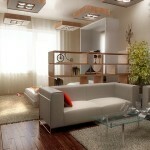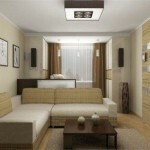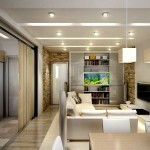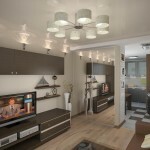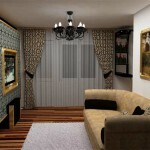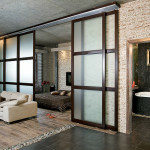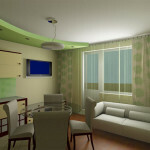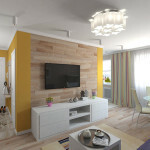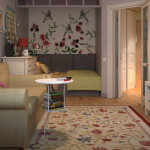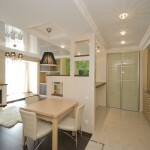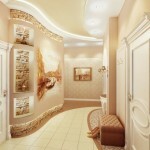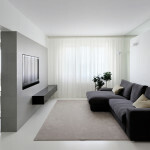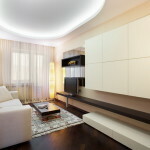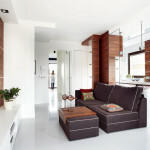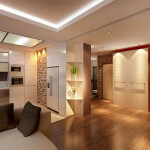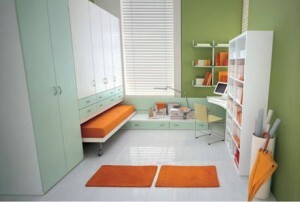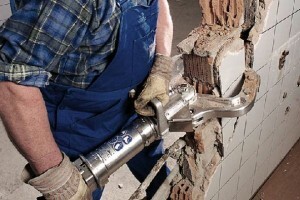The sequence of repair of an apartment in a new building (48 photos). Routing of water pipes, sewerage, wiring. floor screed. rough finish
Table of contents
-
1 List of works
- 1.1 Major works
- 1.2 the intermediate stage
- 1.3 The final stage
- 2 "Dirty job
- 3 Routing of water pipes, sewerage, wiring
- 4 floor screed
- 5 rough finish
- 6 Summing up
- 7 Photo Gallery
What is the sequence of repair of an apartment in the building? This question is often asked by people who buy an apartment without finishing (or rough finish) and is planned to prepare housing for the move.
The sequence of repairs, typically, is the same for both new buildings and for the secondary housing. It should be noted at once that in the decoration of the apartment with his hands, not every item from the above list is the place to be.

Repair in new
You can skip any work, however, break the sequence of stages of repair of an apartment in a new building is not recommended. After all, in the best case, the amount of construction waste in your home will only increase, and at worst - to carry out some work will have to crack what has been done recently.
List of works
Major works
- A full range of demolition work (this includes the demolition of the walls, enhancing device or doorways).
- The device interior partitions.
- Debris removal.
- Installation of the ventilation system.
- Routing water pipes, sewage, heating.
- Electric installation work.
- Low voltage wiring (phone, internet, video surveillance, alarm and television).
- floor screed.
- Leveling plaster walls.
- Installation of windows and doors.
- Mounting the air conditioner unit, laying ducting to the indoor unit.
the intermediate stage
- Laying tiles.
- Plasterboard work.
- Putty ceiling and walls.
- Installation of window sills.
- Apparatus decor elements (ceiling dumbbell molding).
The final stage
- Wallpapering the walls / painting the walls and ceiling.
- Installation of interior doors.
- Installation of suspended or false ceilings.
- Stacking the coating on the floor (parquet, linoleum, carpet).
- Installation casings.
- Installation of a plinth.
- Installation of switches and sockets.
- Installing ceiling lights and sconces.
- Installation of CCTV items (cameras, video intercom).
- plumbing installation.
- Installation of built-in furniture.
- Installation of the indoor unit.
- Garbage removal.
This is the sequence of repairs in a new building. Best of all, if you determine in advance what steps to build the room you have to take, and to stock a tool (and knowledge) to perform this type of work.
Note! Repairs to a new apartment to do it is recommended not to carry out, until after 2-3 years from the date of delivery of the house. And it's not a bad sign, but in the fact that all the houses are shrinking process. Therefore, the finishing materials that will be used for the finishing of the housing may be deformed. In the new house at the beginning it is better not to carry out tiling premises and not to use the wall panels. Inexpensive and flexible finishing materials, such as cloth wallpaper - the best option for the first repairs in the new apartment.
Let us dwell in more detail on some points from the list.
"Dirty job
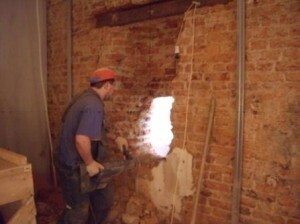
The dismantling of the wall, the price of the work - from 390 rubles.
For obvious reasons, it is performed in the first place. Avoid dismantling, dust and debris, as a rule, owners of new apartments is not possible. And even if the owners do not plan to demolish and remove the wall, still have to remove the rough finish.
Often contractors engaged in the construction of residential buildings, produce a very rough interior trim, using the universal mixture. In such cases, you need to tap the surface of all that when it detects an internal void, reveal them to remove poor-quality plaster. Otherwise, a fresh layer of plaster after some time, simply peel off.
The dirty work include the installation of windows and sills, as well as device and plastering slopes of windows and doors. It should deal with this issue immediately, yet the dirt and dust in the room are allowed and nothing can spoil.
After installation of new windows and window sills do not forget to pack them immediately with plastic wrap, window sills and on himself to lay the material hardboard to avoid scratching.
Routing of water pipes, sewerage, wiring
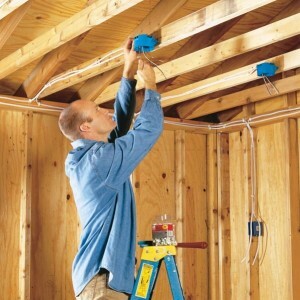
wiring
There are 2 types of wiring pipes: tee and collector. When tee circuit extends from one collector duct. Through tees pipeline is attached to each plumbing items. Plus this method - its low cost. Minus - low pressure.
Manifold same wiring certainly more preferred embodiment, since each santehpriborov carried by separate manifold conduit.
As for the wiring, the rooms can be installed in walls or carry out on the floor. As a rule, the wiring, "packaged" in iron or plastic pipes for electrical safety and protect the wire from damage. Often, the wiring diagram is included in the design project.
floor screed
Perhaps, there is no high-rise apartment, which would be an ideal concrete floor. After the plate from which it is produced, have only one smooth surface - one that is a ceiling at the bottom neighbors.
Variations in height at the same surface, that is hollow, can reach 10 cm. To smooth the surface, the most high quality and durability are the screed of sand concrete.
During device coupler at the edges it is necessary to leave room for future wiring. floor screed begin immediately after the dismantling, because of its complete drying is sometimes delayed for over a month.
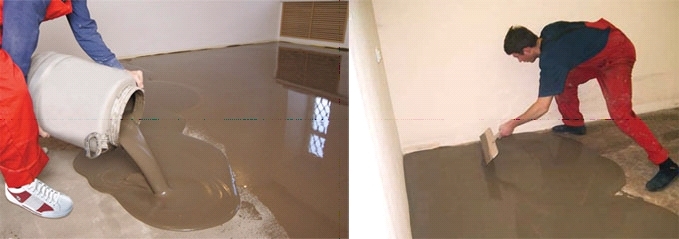
Floor screed
rough finish
It also applies to basic repairs. After all the action on the demolition and transfer of the walls will be finished and completed, requiring them to drill, you can proceed to putty and plastering of the walls and the surface finish ceiling. The aim is to create a rough finish perfectly flat surface.
After the plaster ceiling and walls, as well as their follow-up coat completed, anywhere two-meter rule is applied. If rough finish was performed qualitatively, the clearance between the rule and the wall should not exceed 2 mm.
In fact, the walls of high-rise buildings are far from perfect, the lumen may be 1-7 cm, which today is considered the norm. When a dry surface after the first layer of material on them re-applied plaster, and then following drying grind it.
We have considered only a part of the main works. The main thing, now you know in what order should perform repairs.
Summing up
We hope our article has been helpful to you. In order to more accurately understand the technological and practical issues on our website provides detailed photo and video instruction, in which you will find useful information on the question.
Photo Gallery

